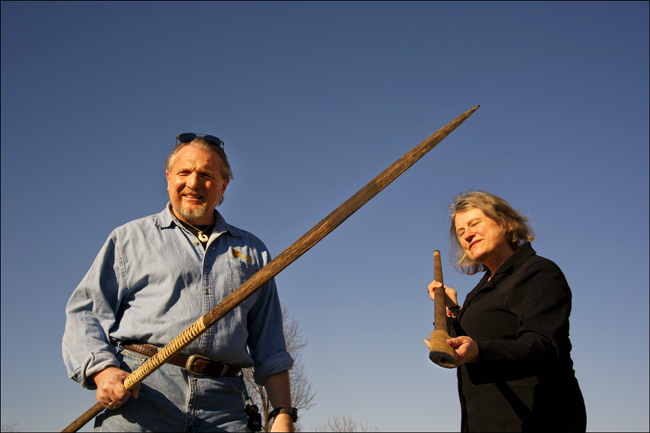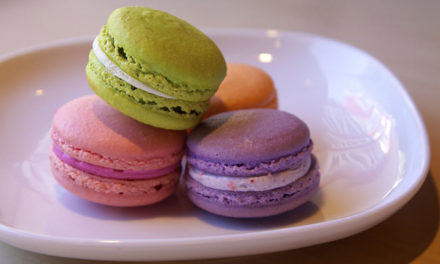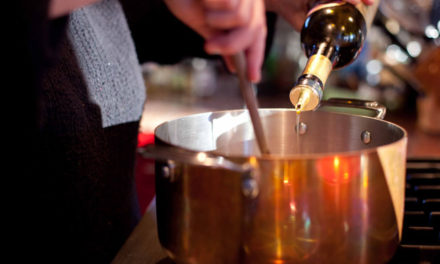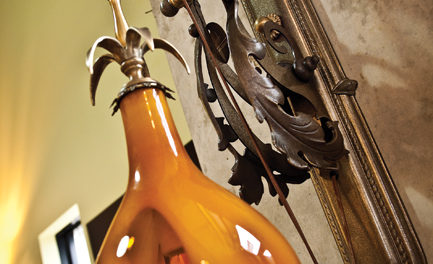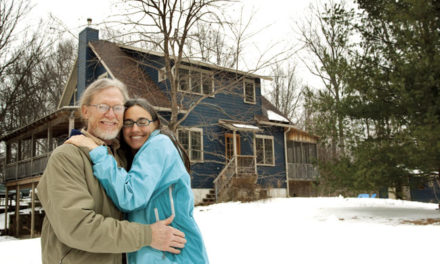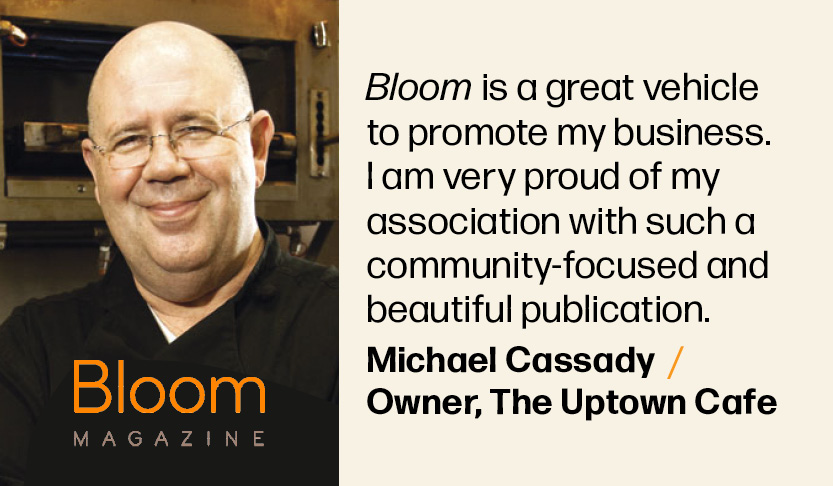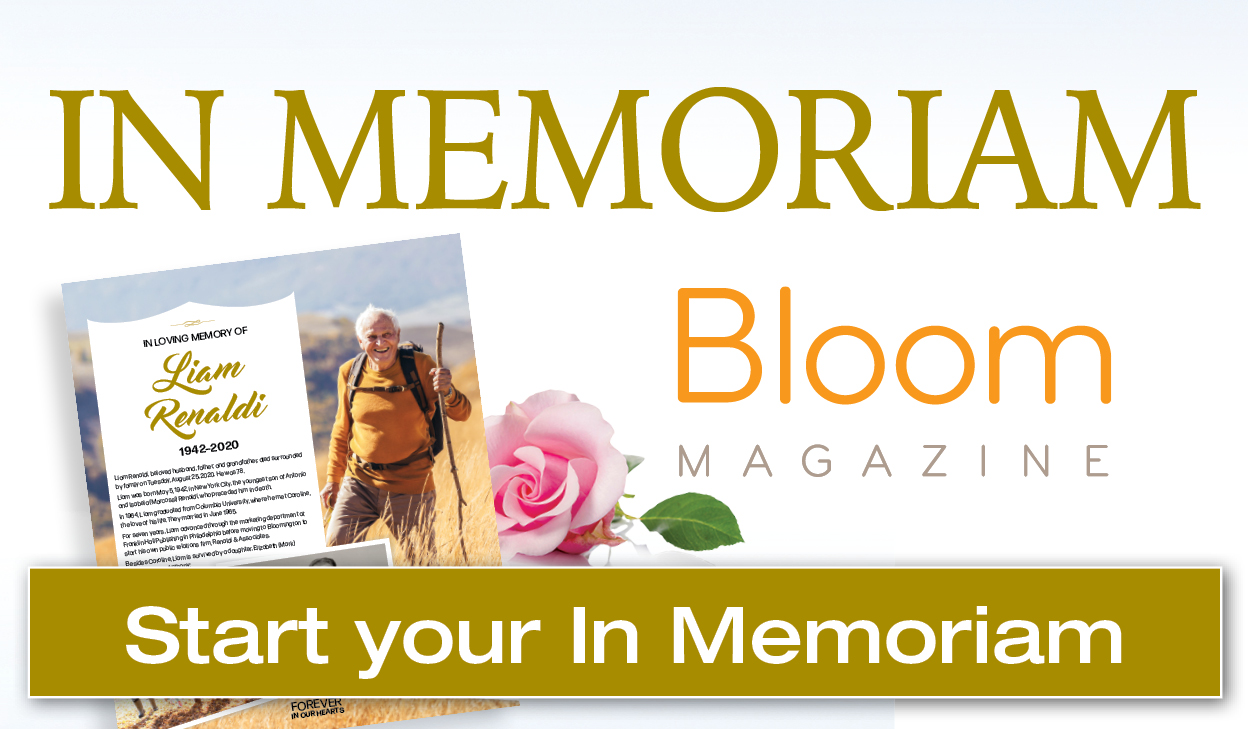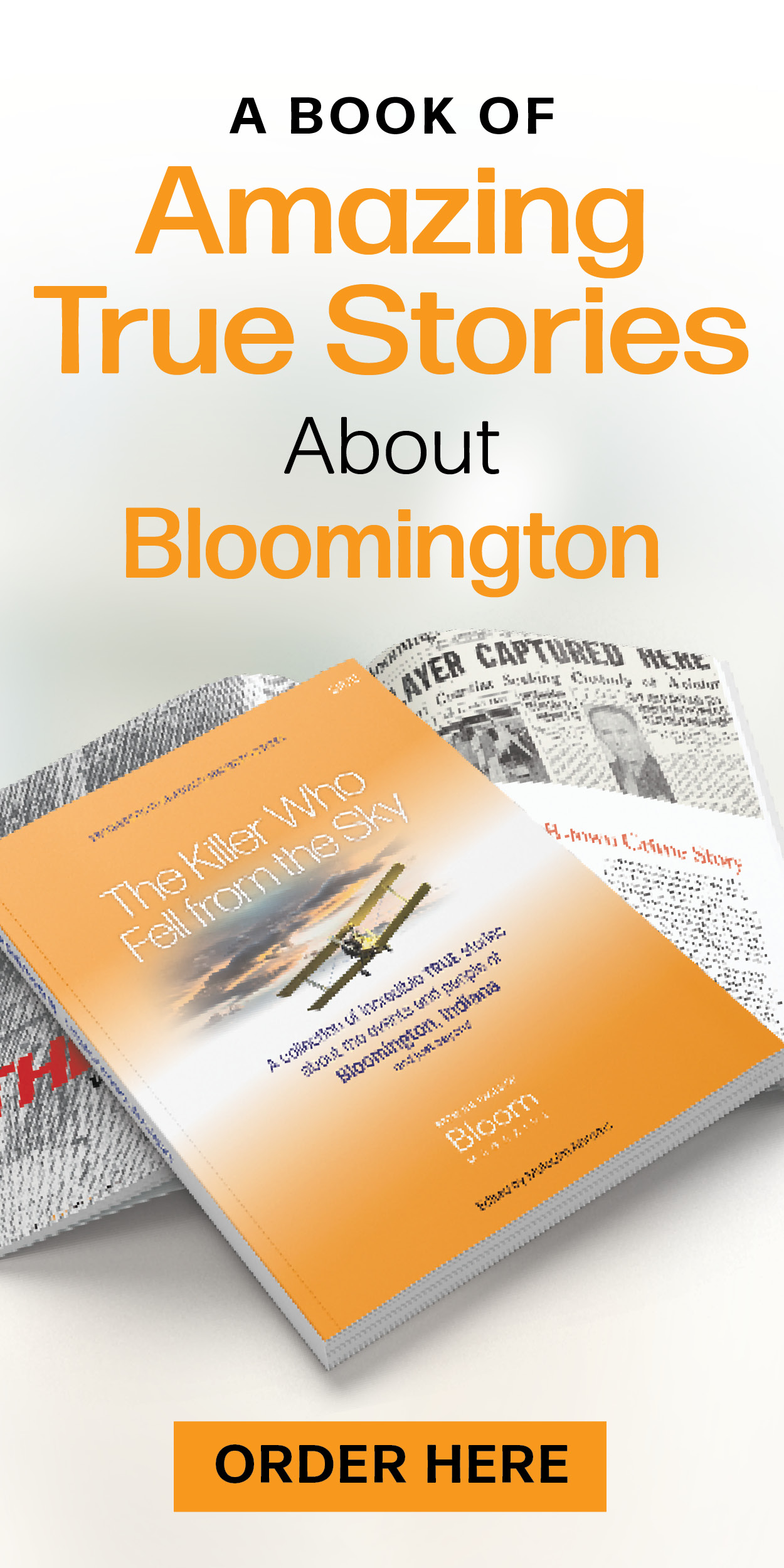BY ADAM KENT-ISAAC
January 6, 1956: Five American missionaries discover a remote settlement of the Huaorani tribe in the Amazon jungle of Ecuador. After dropping gifts from a plane in the hopes of encouraging positive relations, the missionaries—taking considerable risk—decide to meet the natives in person.
All goes well at first. The tribesmen seem friendly. But just two days later, the Americans are brutally attacked, and all five are speared to death. The tragedy was featured in Life magazine at the time and inspired a number of books.
Now, a pair of Huaorani weapons has arrived in Bloomington, brought here by IU professors Nick Toth and Kathy Schick, co-directors of the nonprofit Stone Age Institute. The husband-and-wife team recently returned from Ecuador with a blowgun and spear from the same tribe that committed the atrocity more than a half century ago.
“Both the spear and the blowgun are made from the inner part of a palm tree,” explains Toth. Both weapons are about 7 1/2 feet long. “The blowgun was split in half to make the central groove—it has to be absolutely straight and smooth for the dart to fly. Then it was lashed back together.”
The dart, which Toth describes as “a guided hypodermic needle,” is traditionally coated with a poison called curare, derived from a type of vine. Shooting it effectively requires prodigious lung capacity and technique. “They can hit a monkey in a tree one hundred and fifty feet up,” says Toth.
Toth and Schick journeyed to Ecuador last November. They were intrigued by the idea of investigating the Huaorani. But instead of warlike tribesmen, they found a culture gradually adapting to the modern world while at the same time struggling to preserve its identity.
“These days, they wear soccer shorts and T-shirts,” says Toth. “They’re sitting on the largest oil reserve in Ecuador. Their options are either work for the oil companies or promote eco-tourism.”
Their traditional method of hunting, though, is one way the Huaoranis hang on to their roots. “For large animals they use this exact spear,” says Toth (see photo). “For monkeys and birds, the blowgun. For a large monkey, it takes five or six of these darts to bring it down from the tree.”
Barring an incursion of hostile monkeys in Bloomington, the weapons will remain on display at the Stone Age Institute to be used at conferences and in classes. The institute is hoping to raise funds to help promote the long-term sustainability of the Huaorani traditions. For more information, visit stoneageinstitute.org or contact Schick at [email protected].


